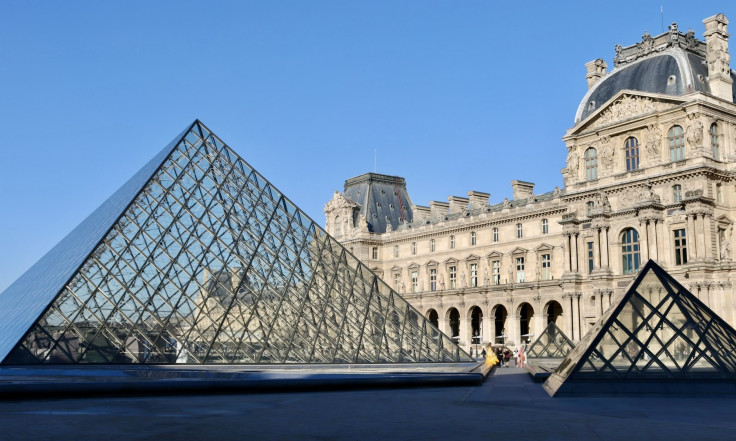Millions Missing And No Clues – Why Are Museum Heists So Hard To Crack? Top 5 Heists In Recent Memory, Revealed
Louvre heist sparks fresh intrigue over history's boldest museum thefts.

The world's most renowned museums have witnessed some of the boldest and most baffling thefts in history. From priceless paintings vanishing overnight to treasures stolen in plain sight, investigators are still chasing answers years later. Despite advanced security systems and international cooperation, the allure of the perfect heist continues to defy explanation.
Recently, the Louvre witnessed one such heist. A team of masked thieves carried out a highly professional daylight raid on the museum's Galerie d'Apollon, using a basket lift to access a window and power tools to break display cases. They made away with eight valuable historic jewellery pieces, including items once belonging to Napoleon Bonaparte, Empress Eugénie de Montijo and others, which the French culture ministry described as of 'inestimable' heritage value.
@cnn Thieves have stolen “priceless” jewelry from the Louvre in Paris, the world’s most-visited museum, in an audacious seven-minute raid, the French interior minister has said. #cnn #news #paris #france #louvremuseum
♬ original sound - CNN - CNN
Not much is known yet about the incident, but it is certainly not singular in nature. Here are five of the top museum heists in recent memory that have captured public attention.
The Isabella Stewart Gardner Museum Heist (1990 – Boston, USA)
In the early hours of 18 March 1990, two men disguised as police officers entered the Isabella Stewart Gardner Museum in Boston. Claiming to respond to a disturbance, they tied up the guards and spent more than an hour looting the galleries. By the time they escaped, 13 works worth over £390 million (approximately $500 million) had vanished.
Among the missing masterpieces are Vermeer's The Concert and Rembrandt's The Storm on the Sea of Galilee, his only seascape. Other stolen pieces include works by Degas, Manet, and Flinck, along with a Chinese gu and an eagle finial of little value. Despite the FBI offering a £7.8 million (approximately $10 million) reward, the largest private bounty ever offered, no arrests have been made and none of the artworks have been recovered. To this day, empty frames hang in the museum.
The Van Gogh Museum Theft (2002 – Amsterdam, Netherlands)
In 2002, two men broke through the roof of the Van Gogh Museum in Amsterdam and stole two early works by Vincent van Gogh. View of the Sea at Scheveningen and Congregation Leaving the Reformed Church in Nuenen disappeared from the world's largest Van Gogh collection, which houses over 200 paintings and 500 drawings. Both were recovered in 2016 after being found hidden in a criminal's safe in Italy.
The British Museum Gold Theft (2023 – London, UK)
The British Museum became the centre of scandal in August 2023 when it confirmed the disappearance of around 2,000 artefacts. The missing items, including ancient gold jewellery and gemstones dating from the 15th Century BC to the 19th Century AD, are believed to have been stolen by an insider over several years. Some were later traced to online listings, sold for far less than their estimated worth.
The Louvre Mona Lisa Heist (1911 – Paris, France)
Perhaps the most famous art theft in history occurred on 21 August 1911, when Leonardo da Vinci's Mona Lisa was stolen from the Louvre. The thief, Vincenzo Peruggia, a former museum employee, disguised himself as a worker and removed the painting from its frame. He calmly walked out with it hidden beneath his white smock, unnoticed for nearly 24 hours.
The theft captivated global audiences. Although the painting was recovered two years later, the heist inadvertently transformed Mona Lisa into the world's most recognisable artwork.
The National Museum Theft (2004 – Oslo, Norway)
On 22 August 2004, two armed men entered the Munch Museum in Oslo and stole Edvard Munch's The Scream and Madonna in broad daylight. Witnesses were held at gunpoint as the robbers tore the paintings from the walls and escaped in a waiting car. The theft caused national outrage, with the missing artworks symbolising a wound in Norway's cultural identity.
After two years of investigation, police recovered both paintings in 2006. While three men were convicted of minor roles, the principal thieves were never identified.
Why Museum Heists Remain Unsolved
From Boston to London, these cases reveal how art theft often outpaces investigation. Masterpieces worth millions can vanish in minutes yet remain hidden for decades. Limited documentation, inside knowledge, and global black markets make recovery difficult, while the sheer scale of private collections leaves countless artefacts vulnerable.
© Copyright IBTimes 2025. All rights reserved.





















